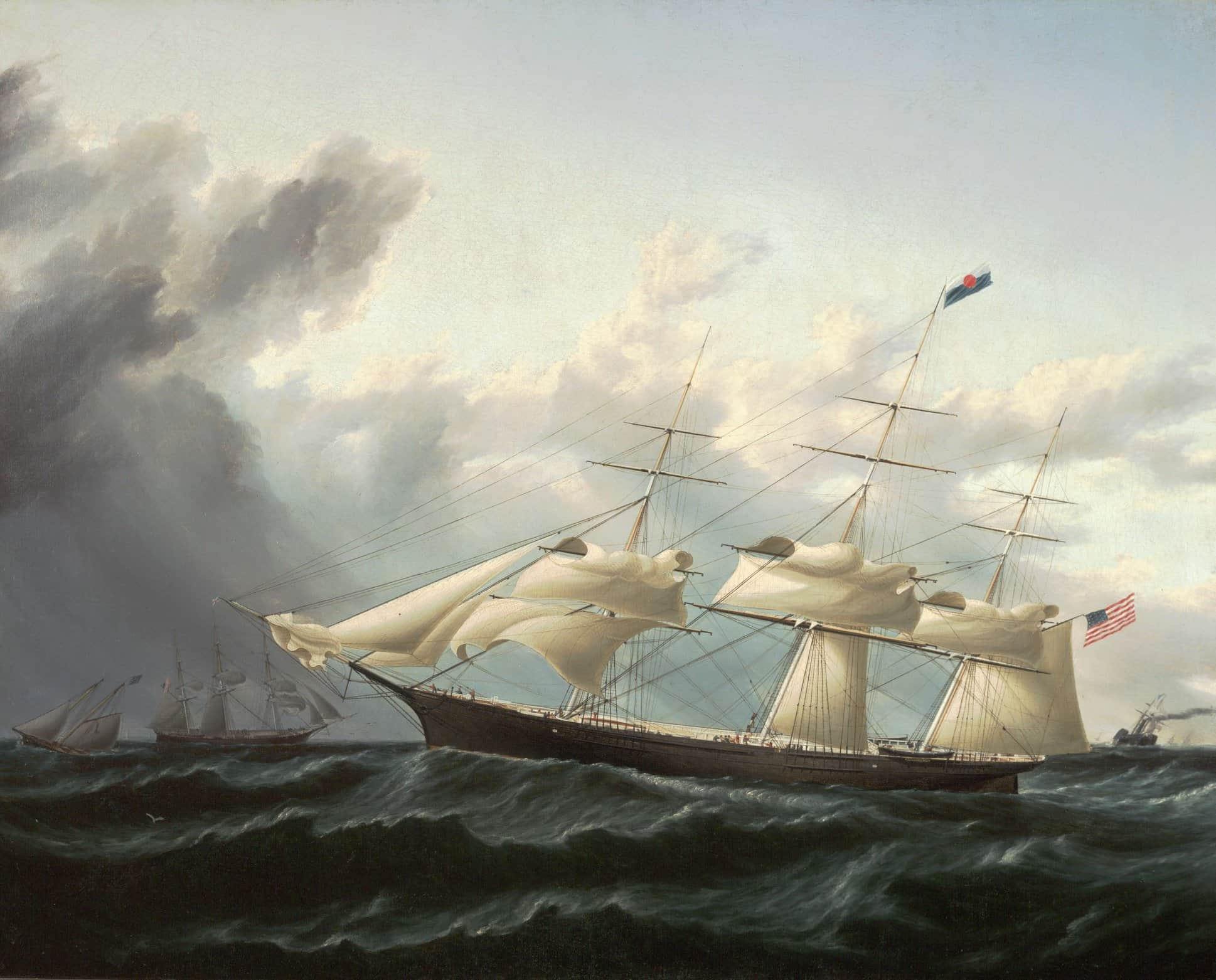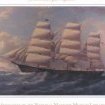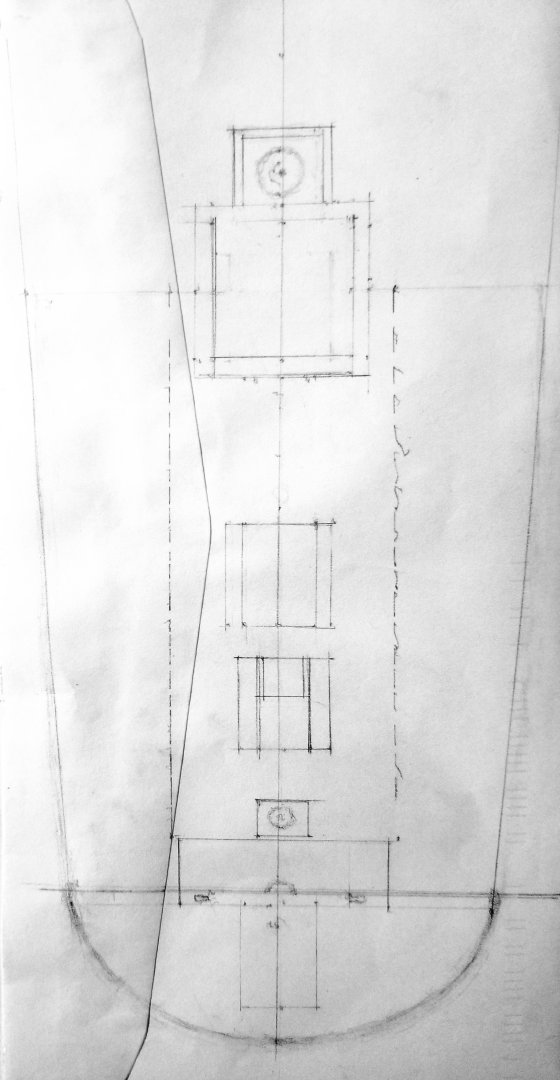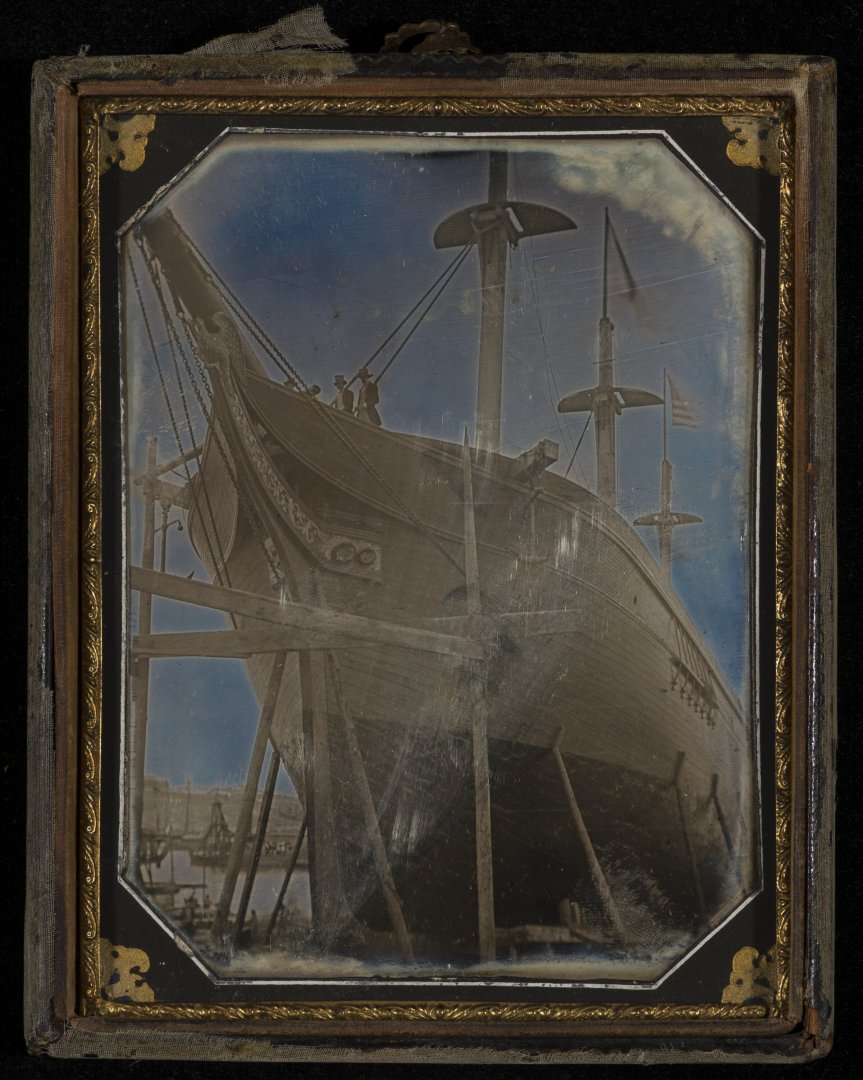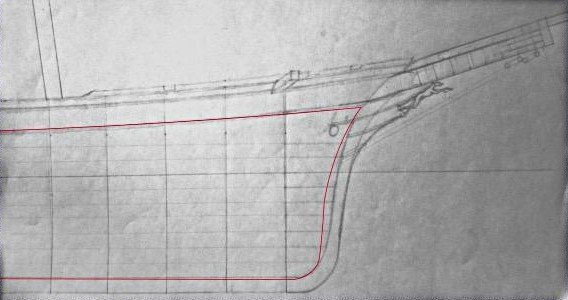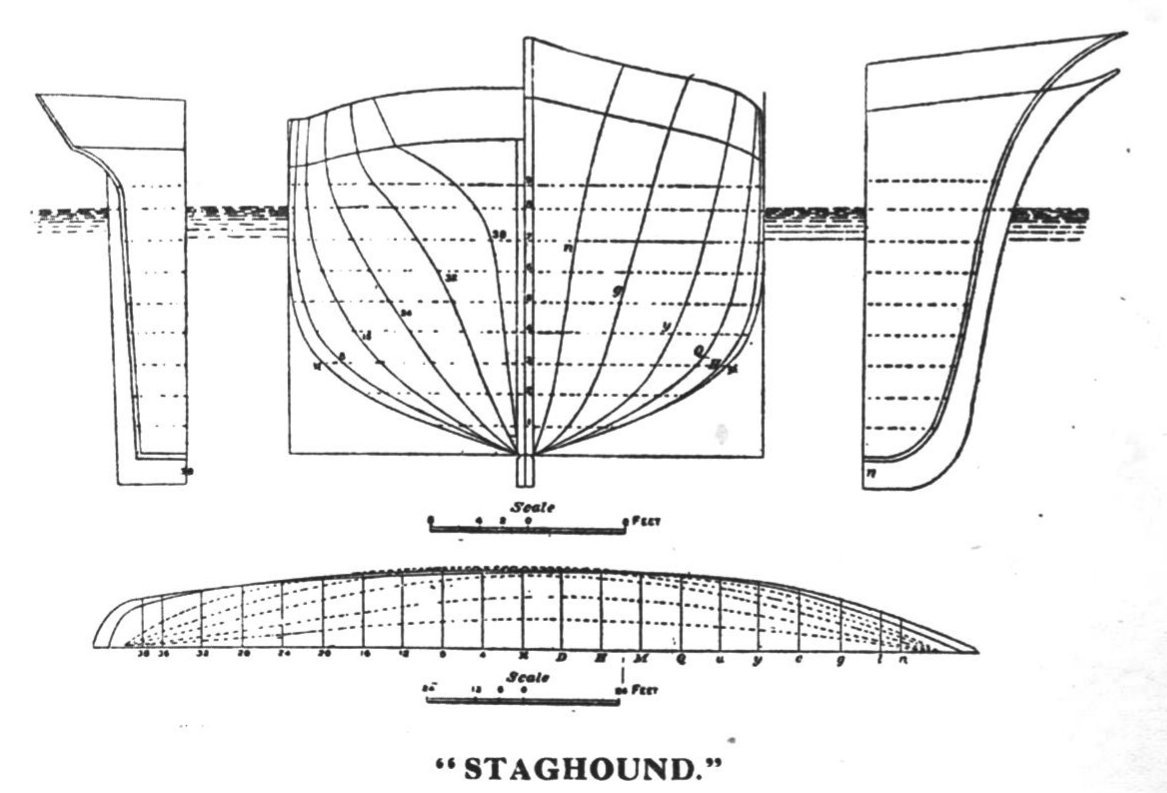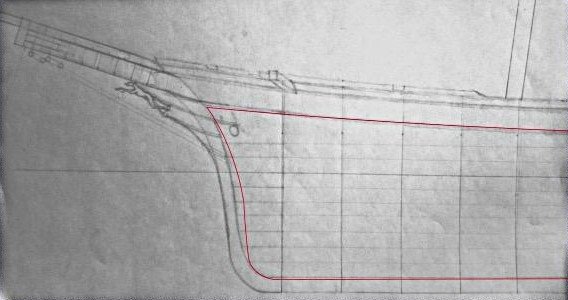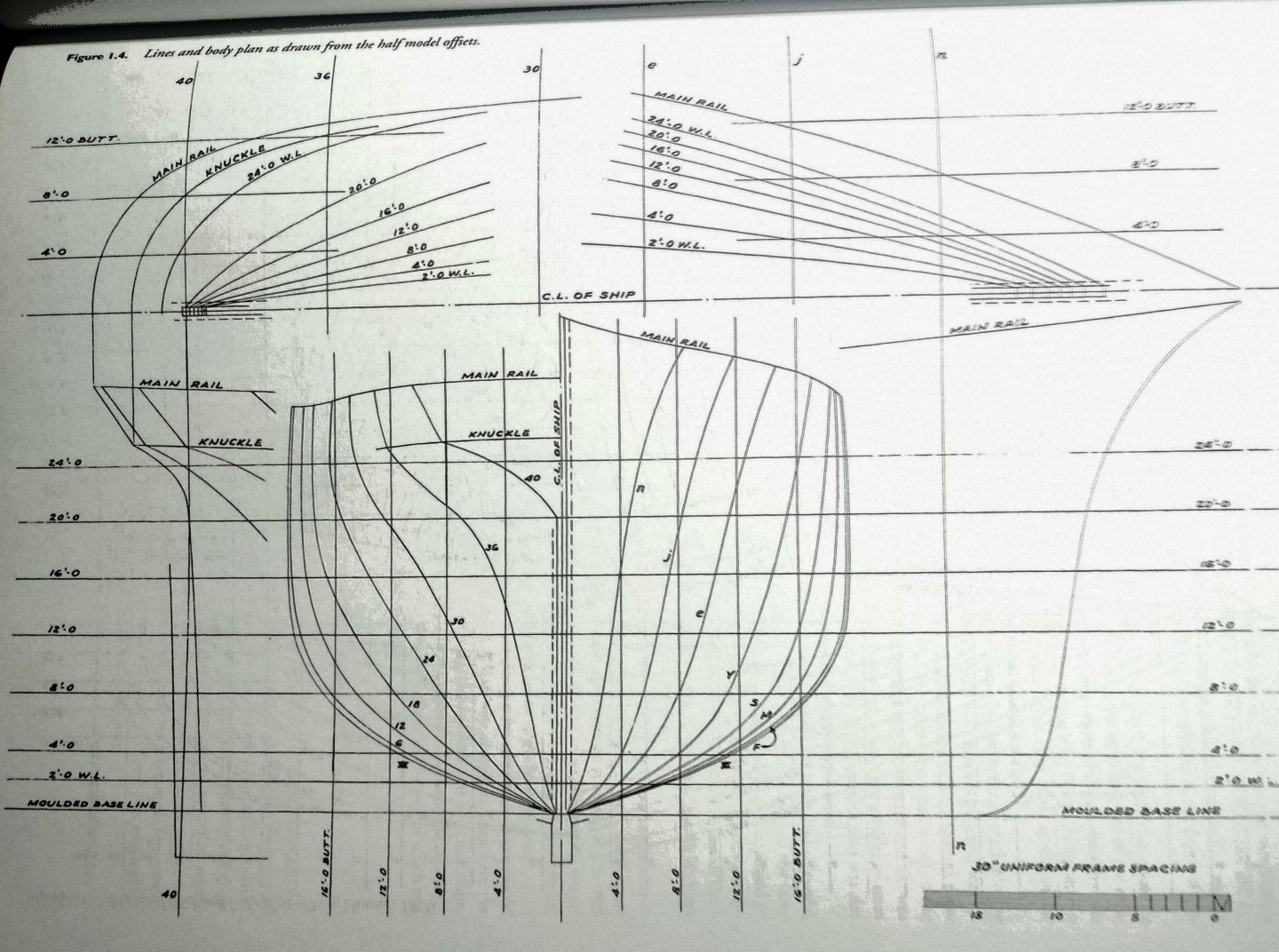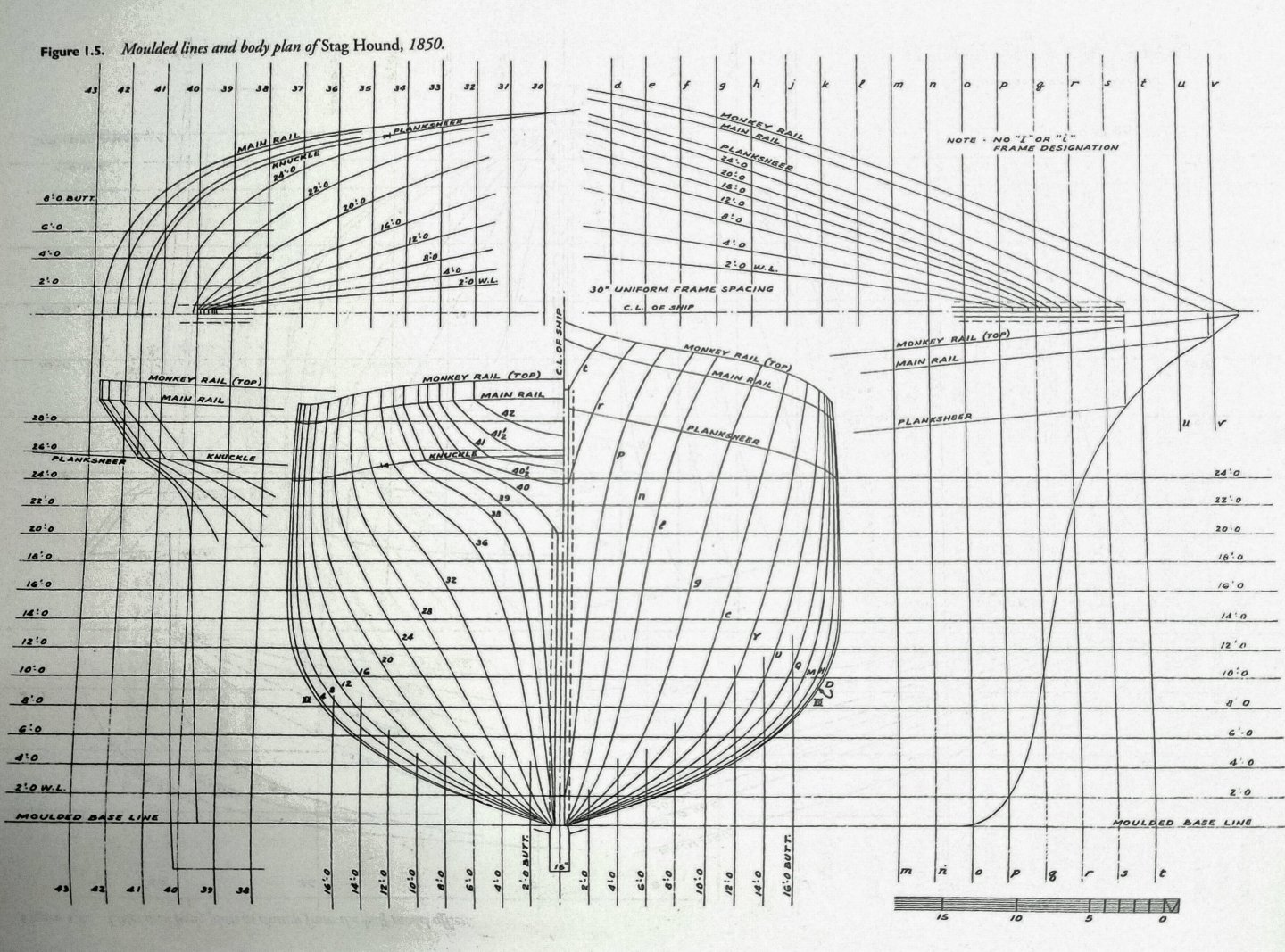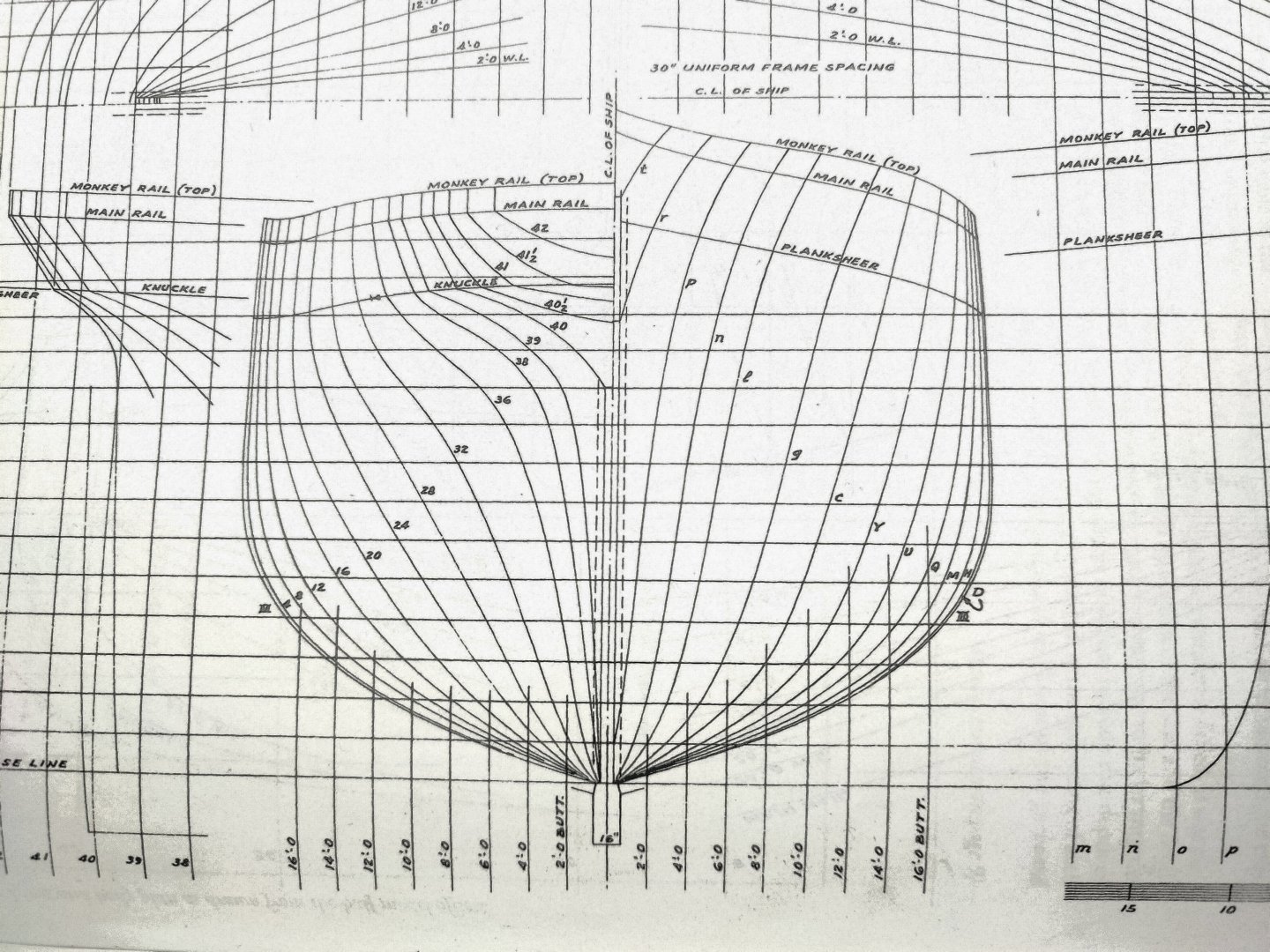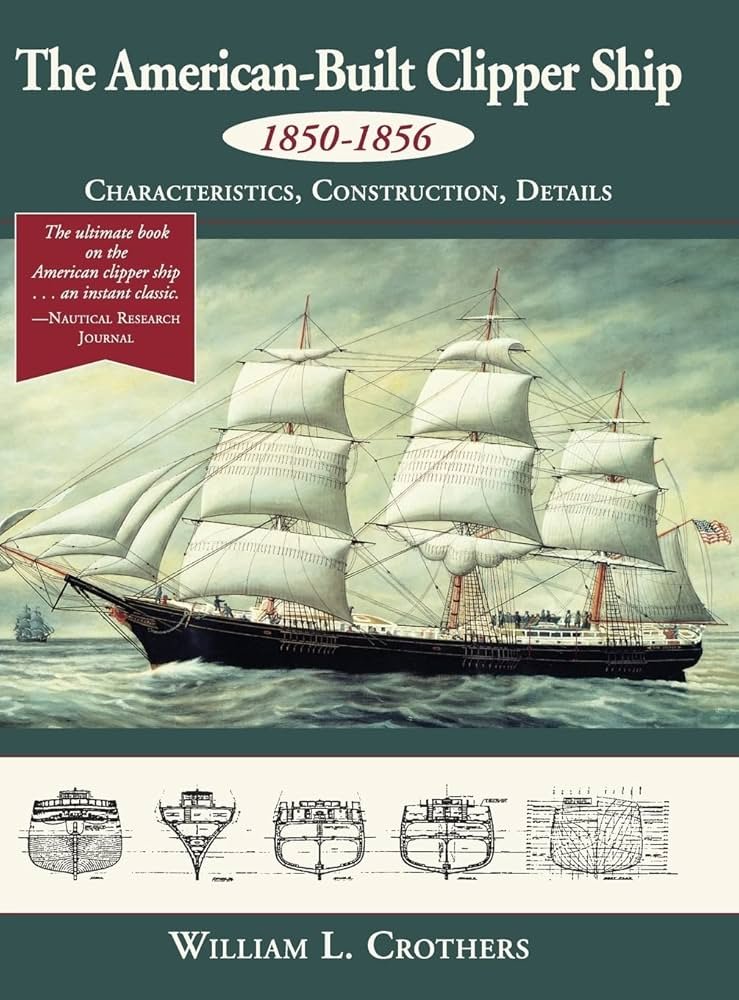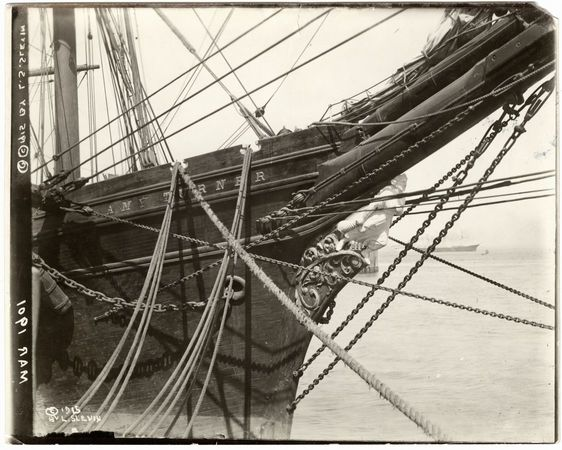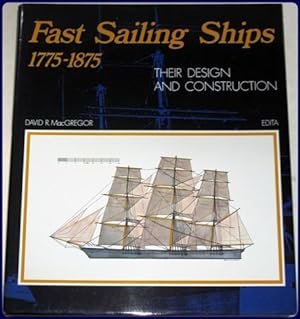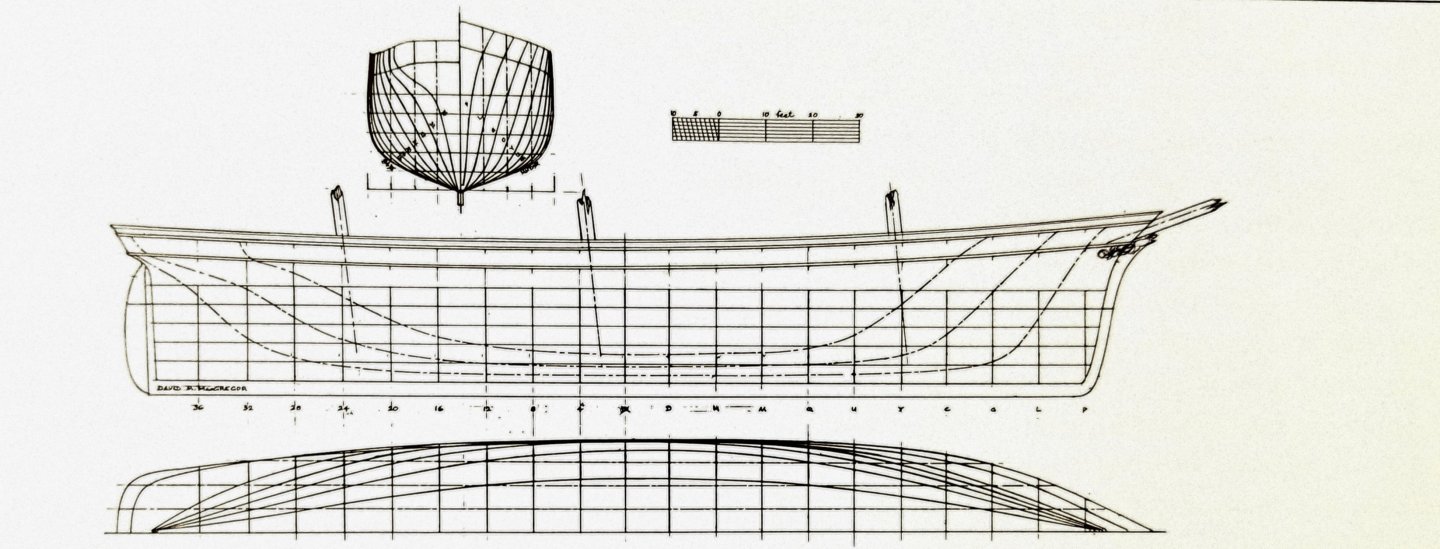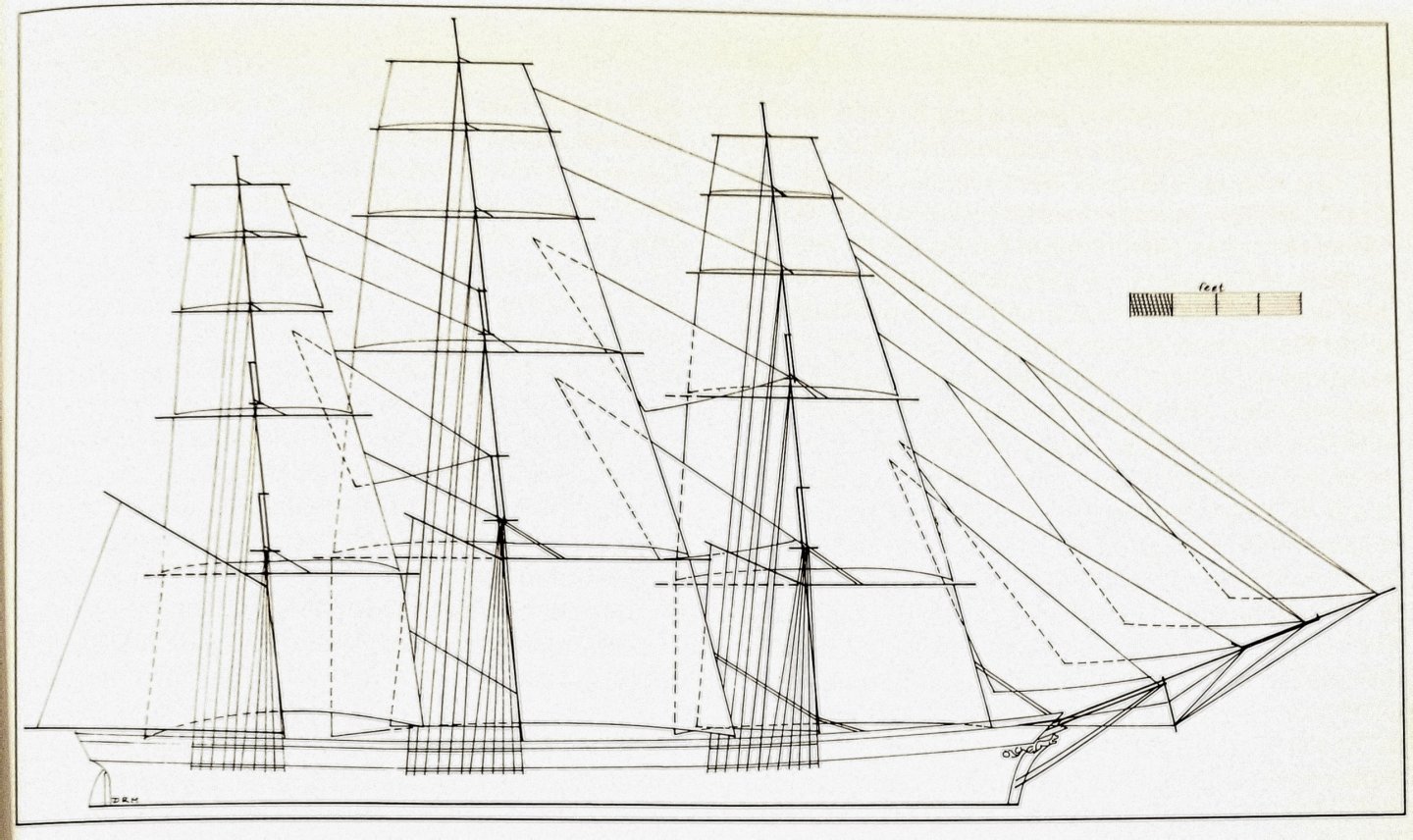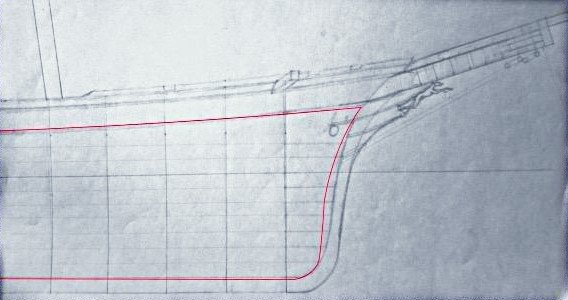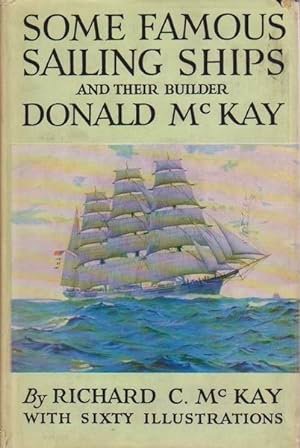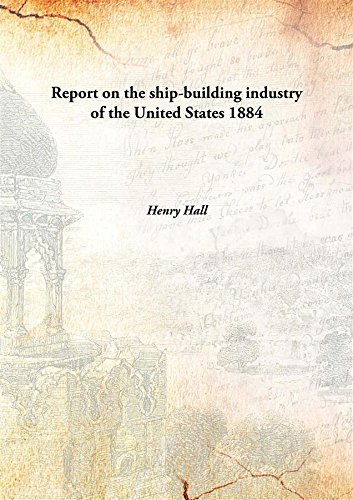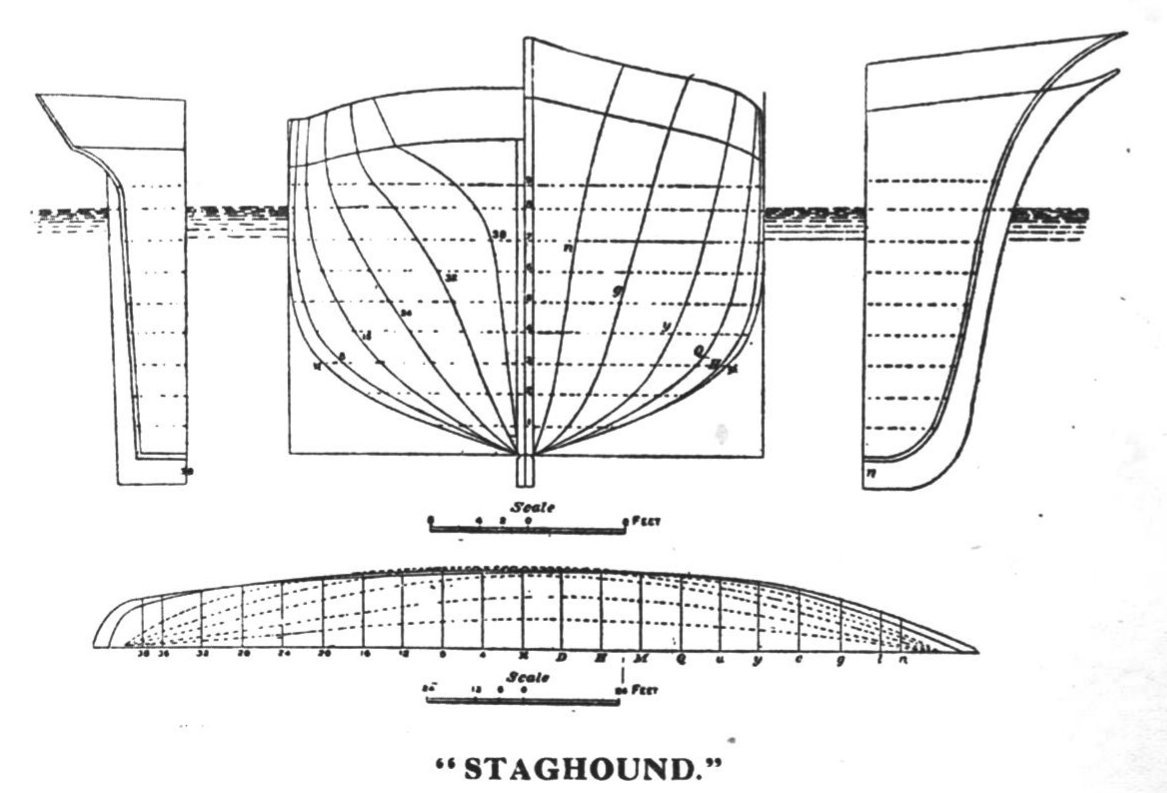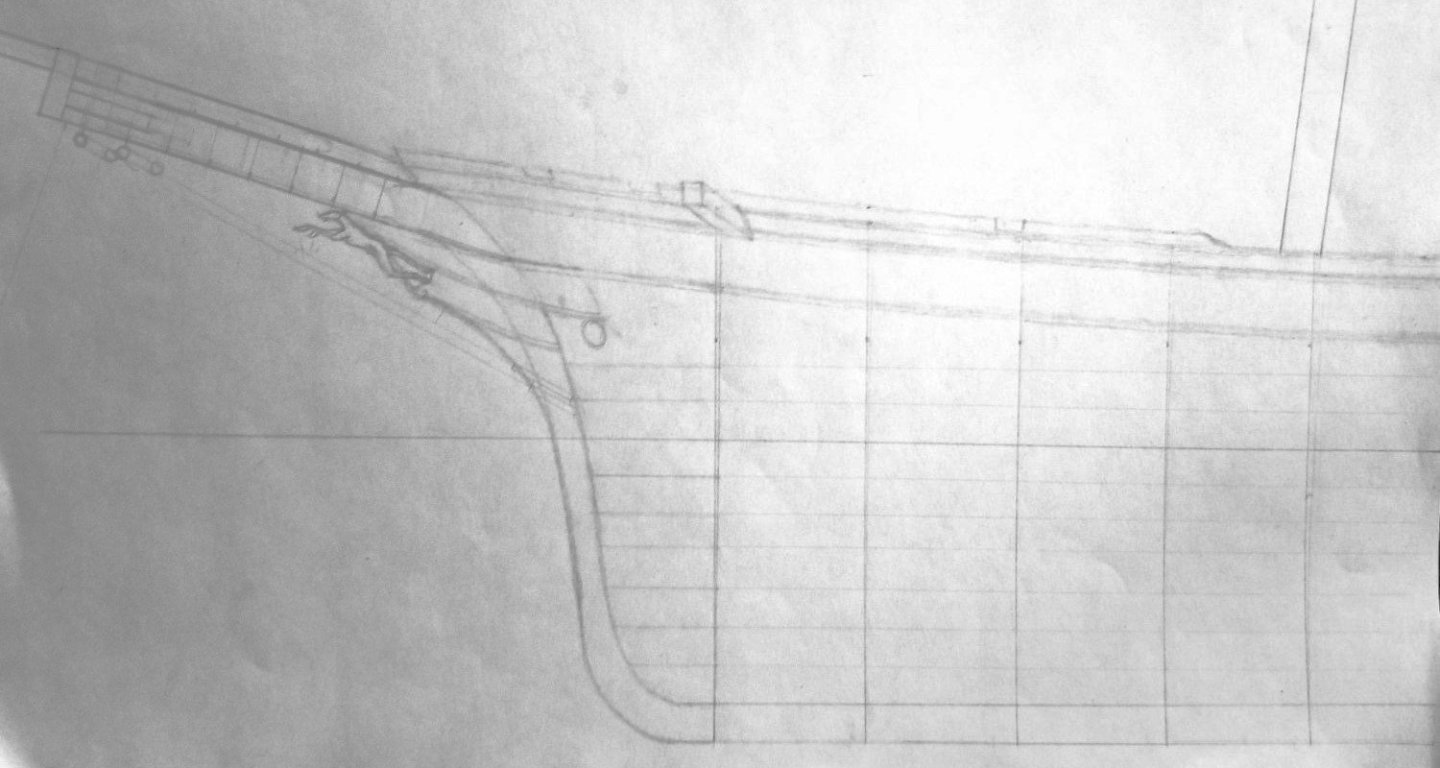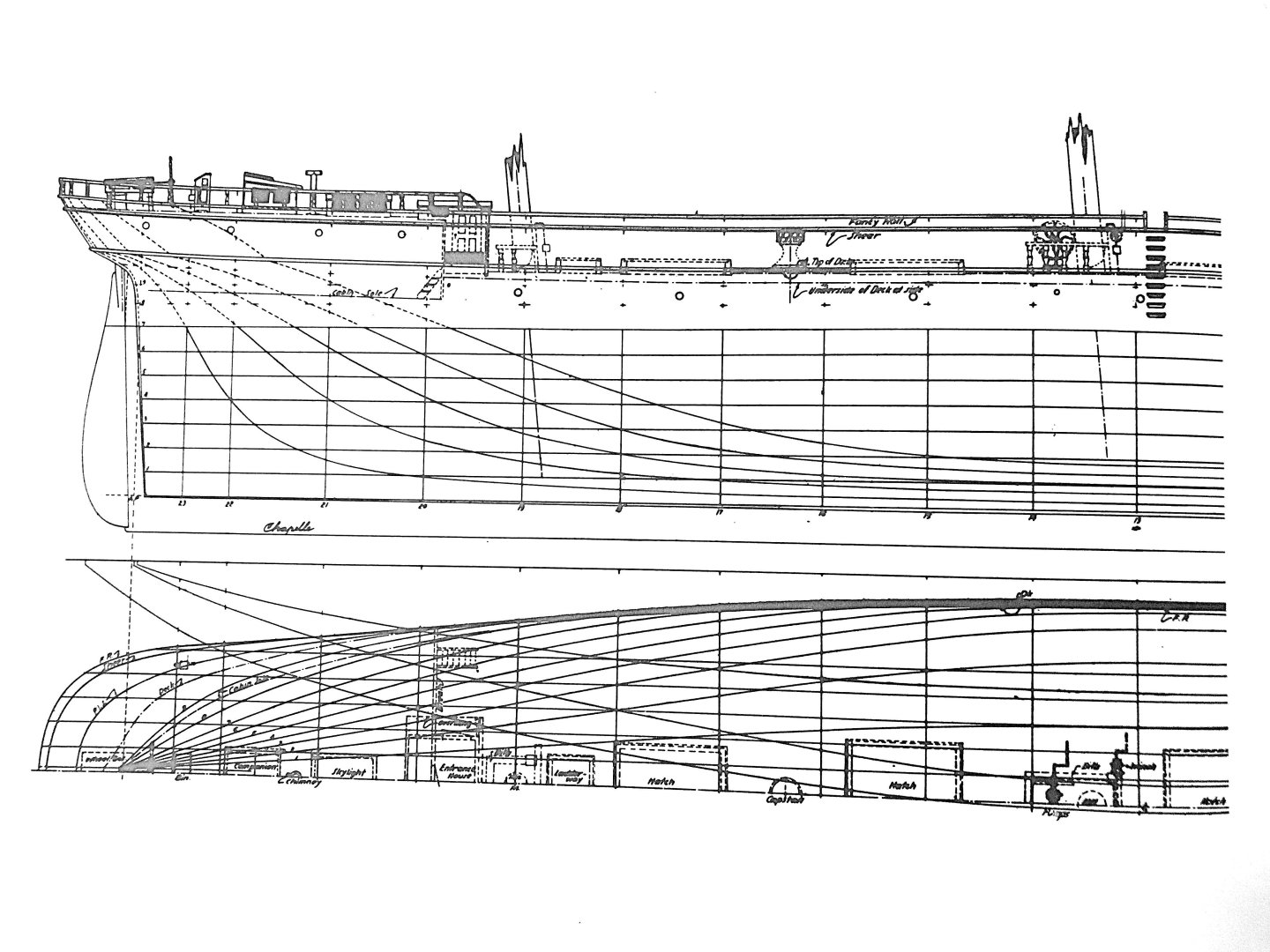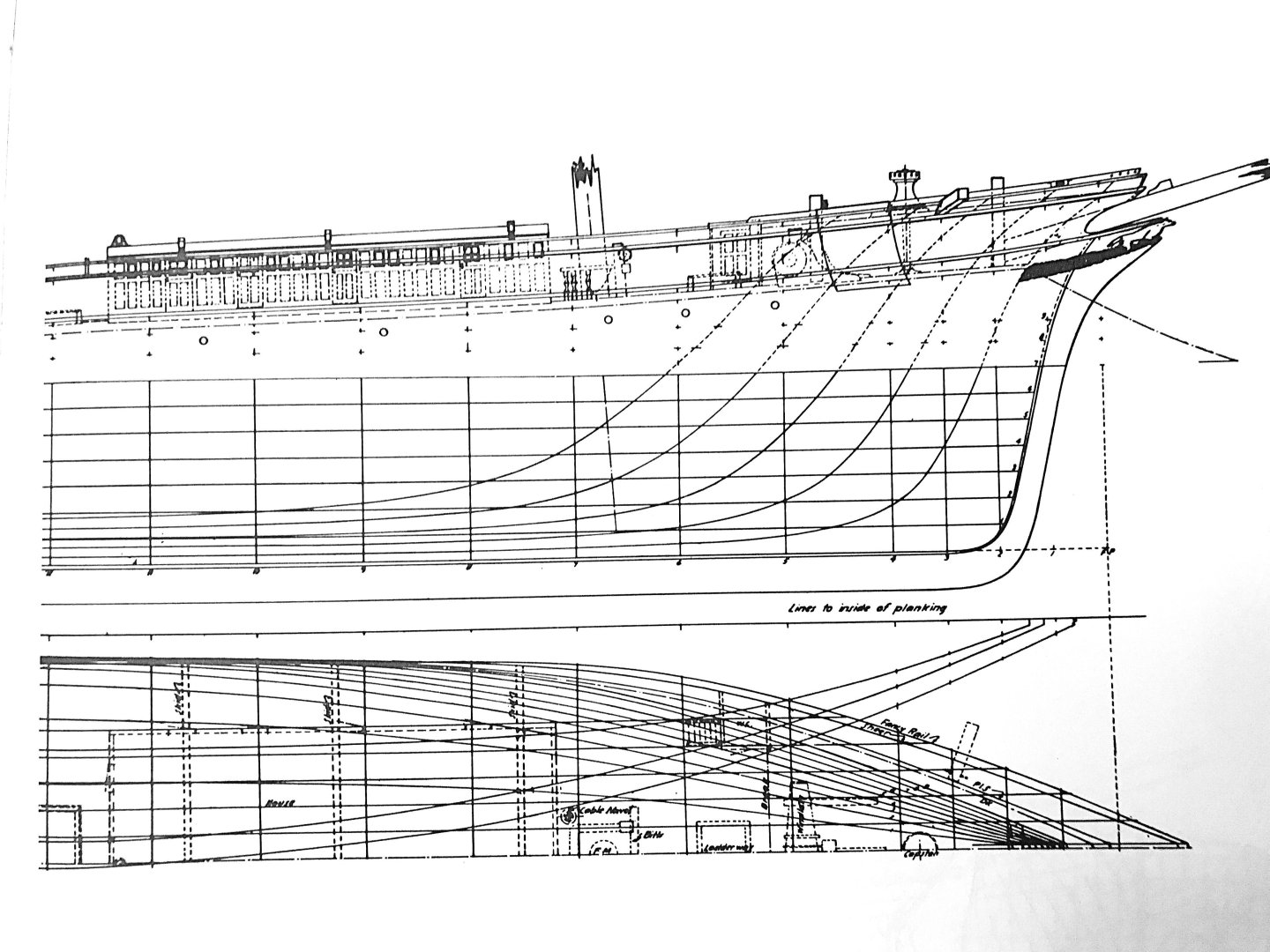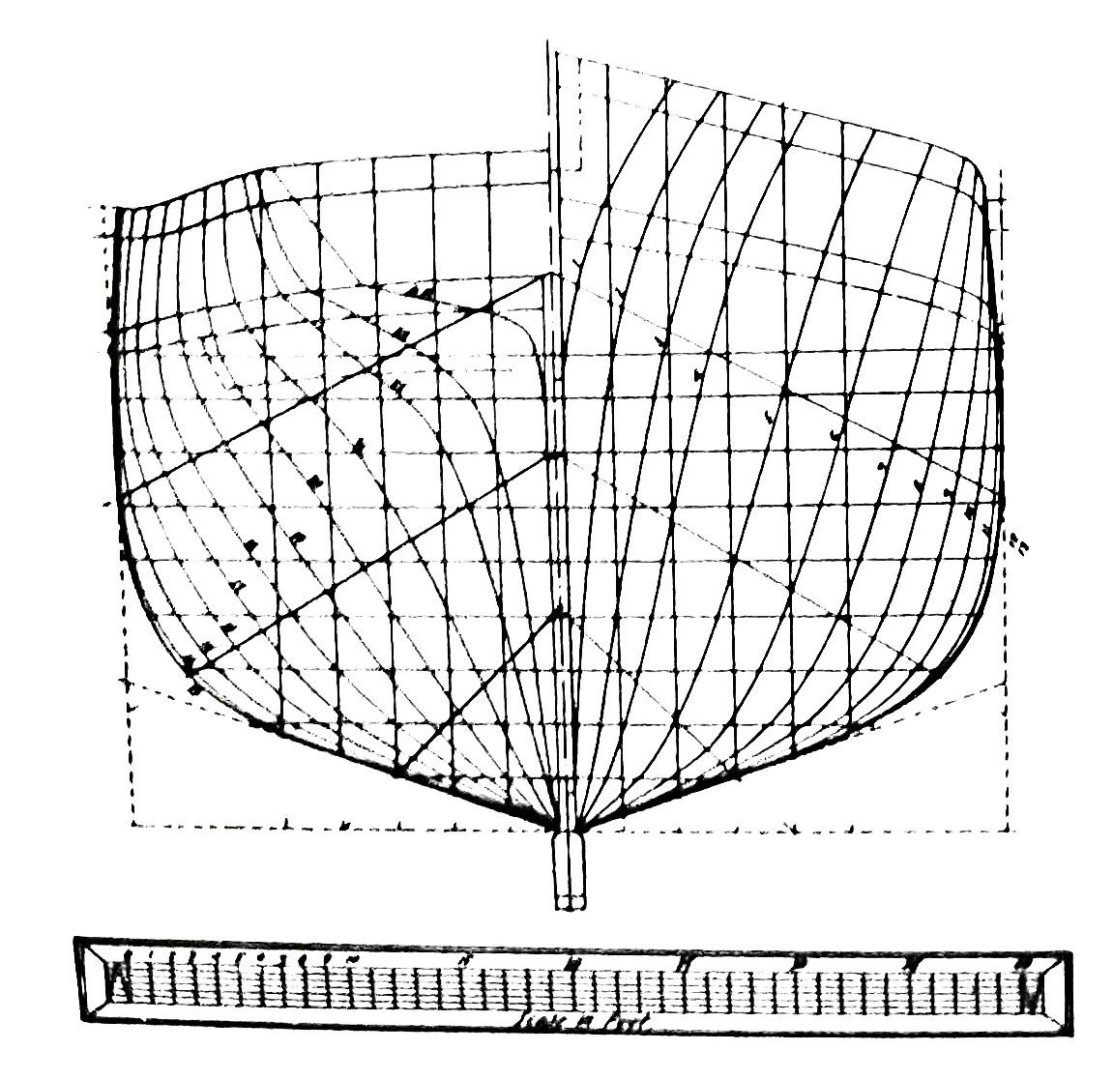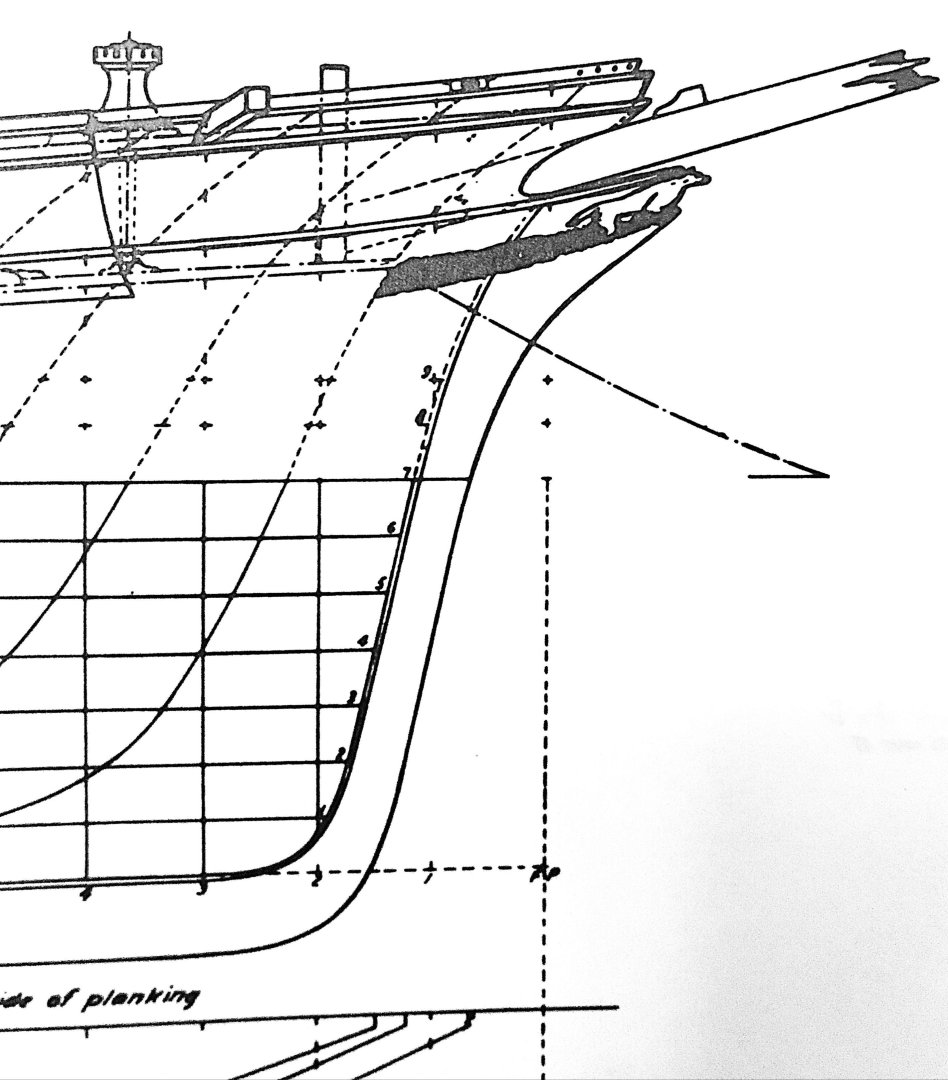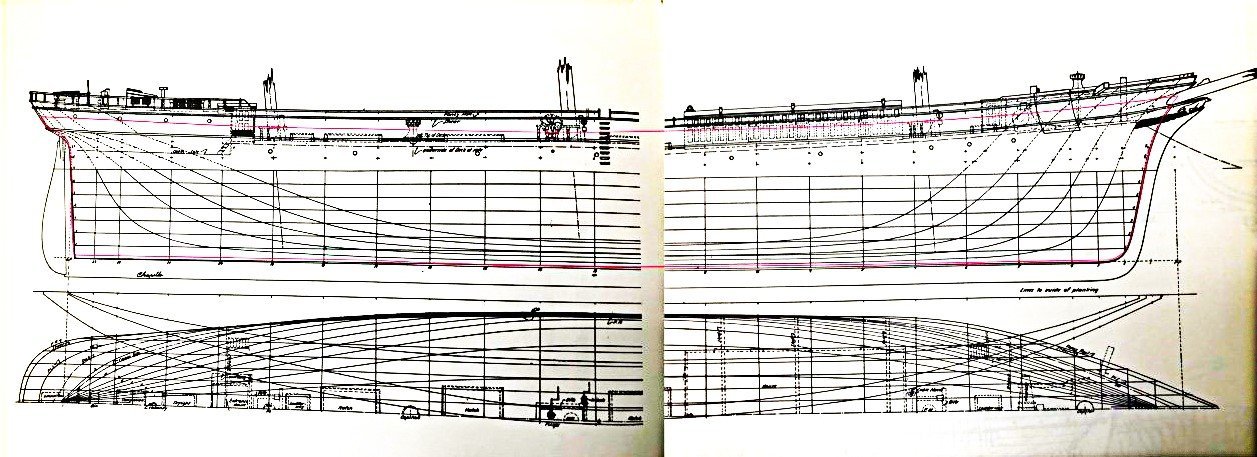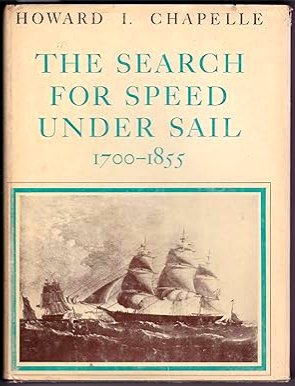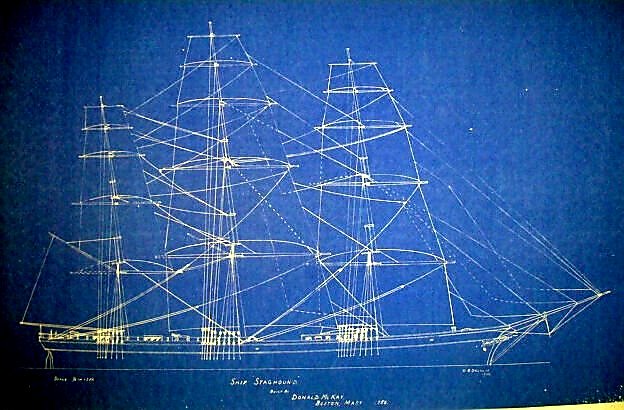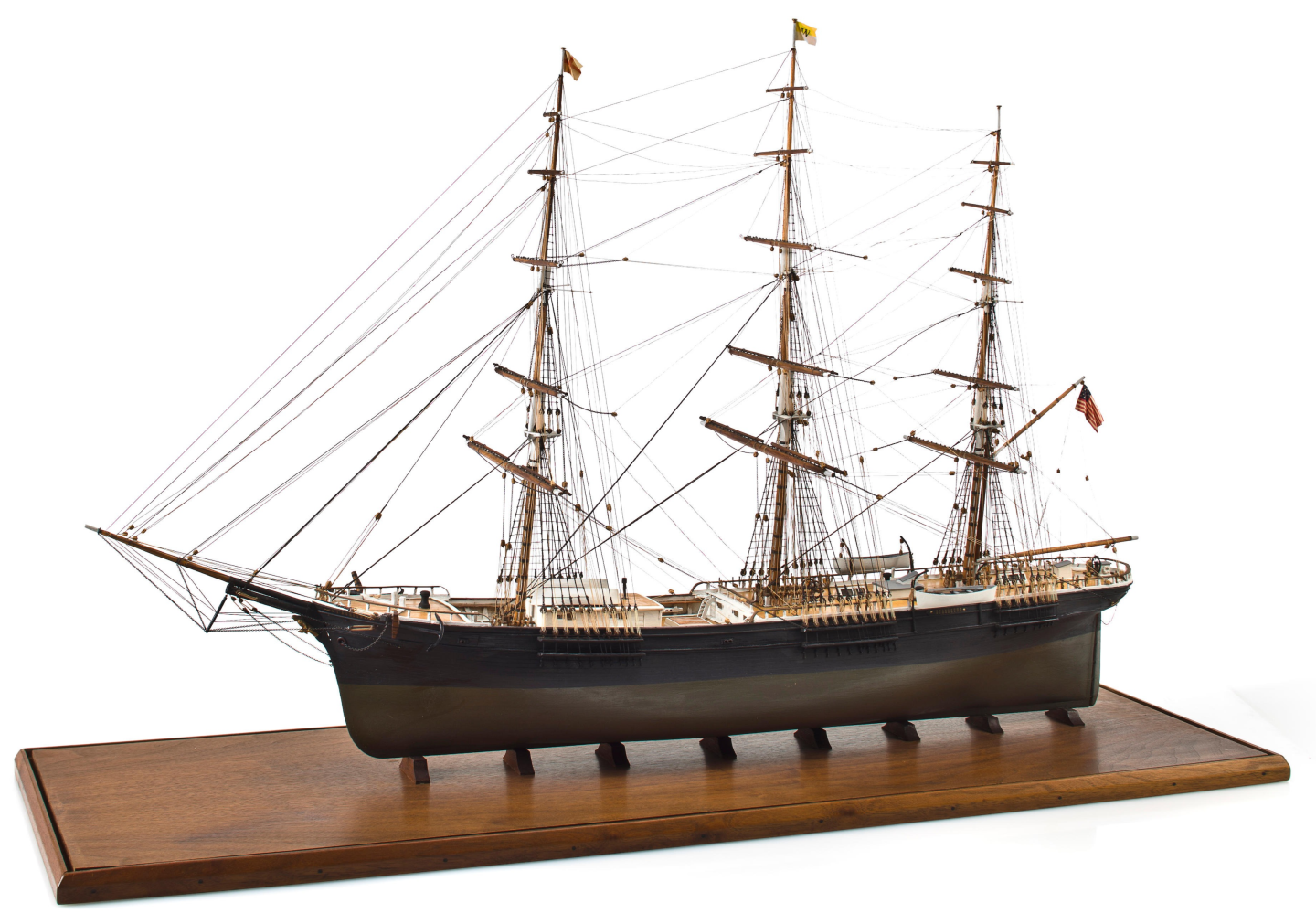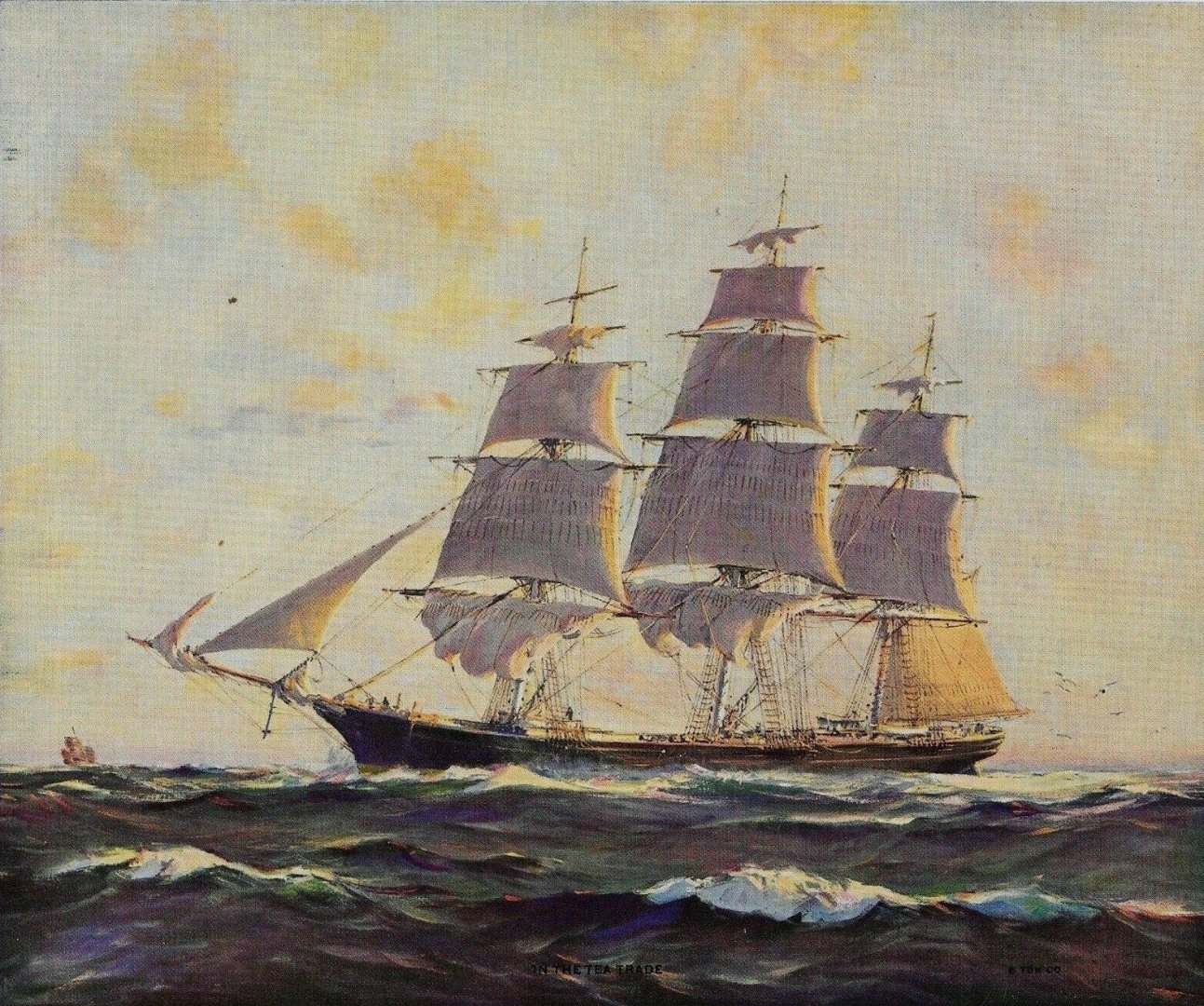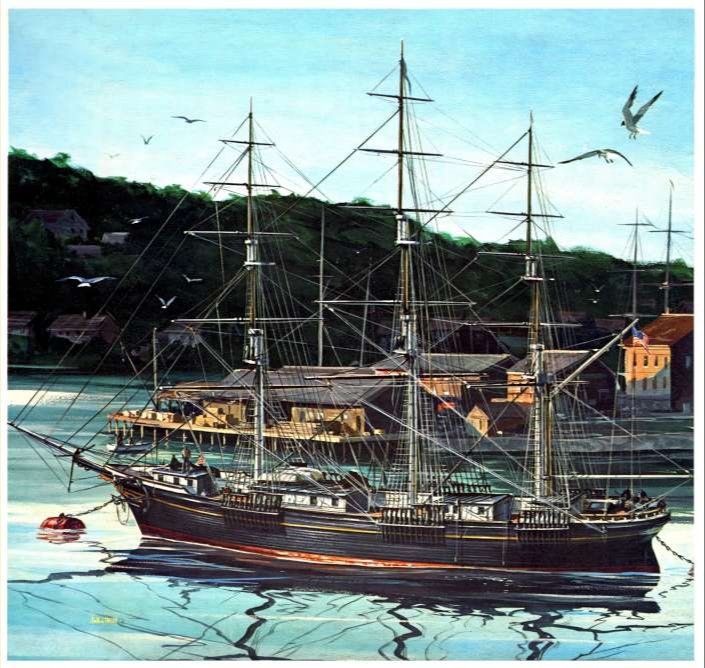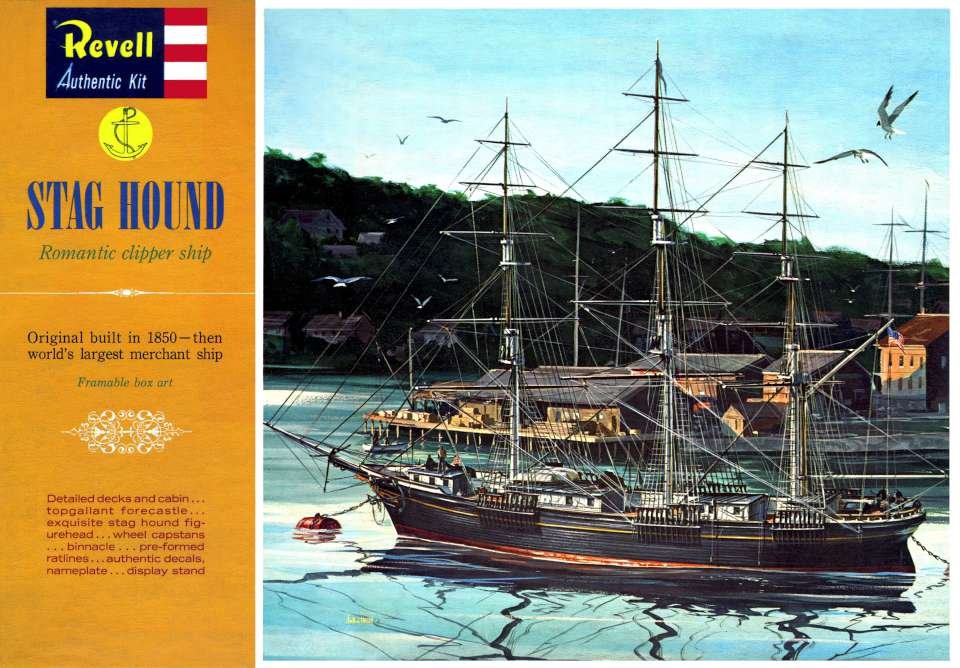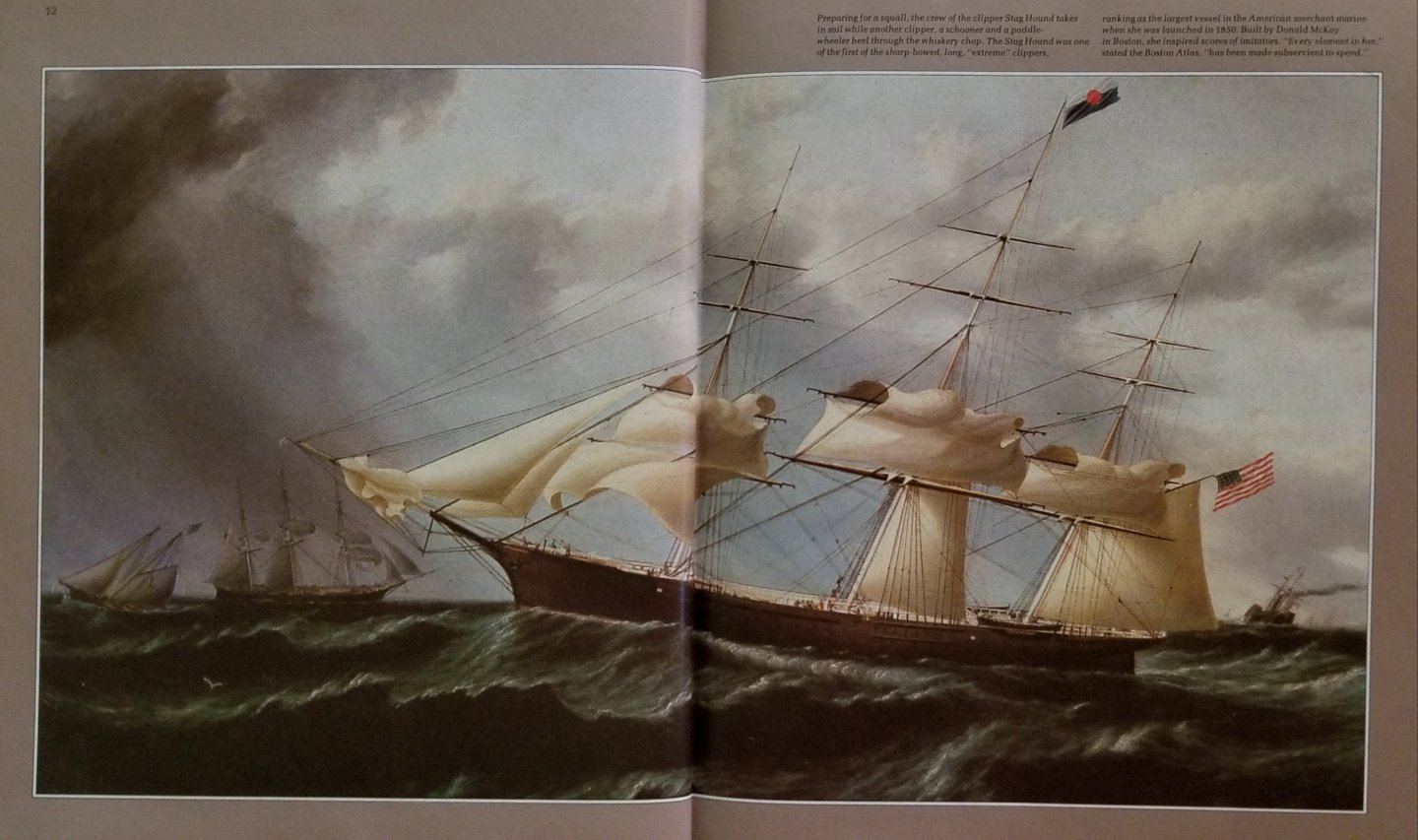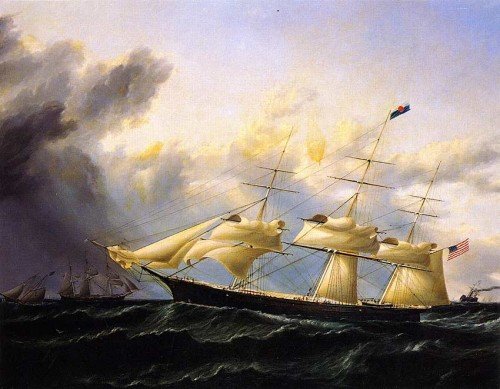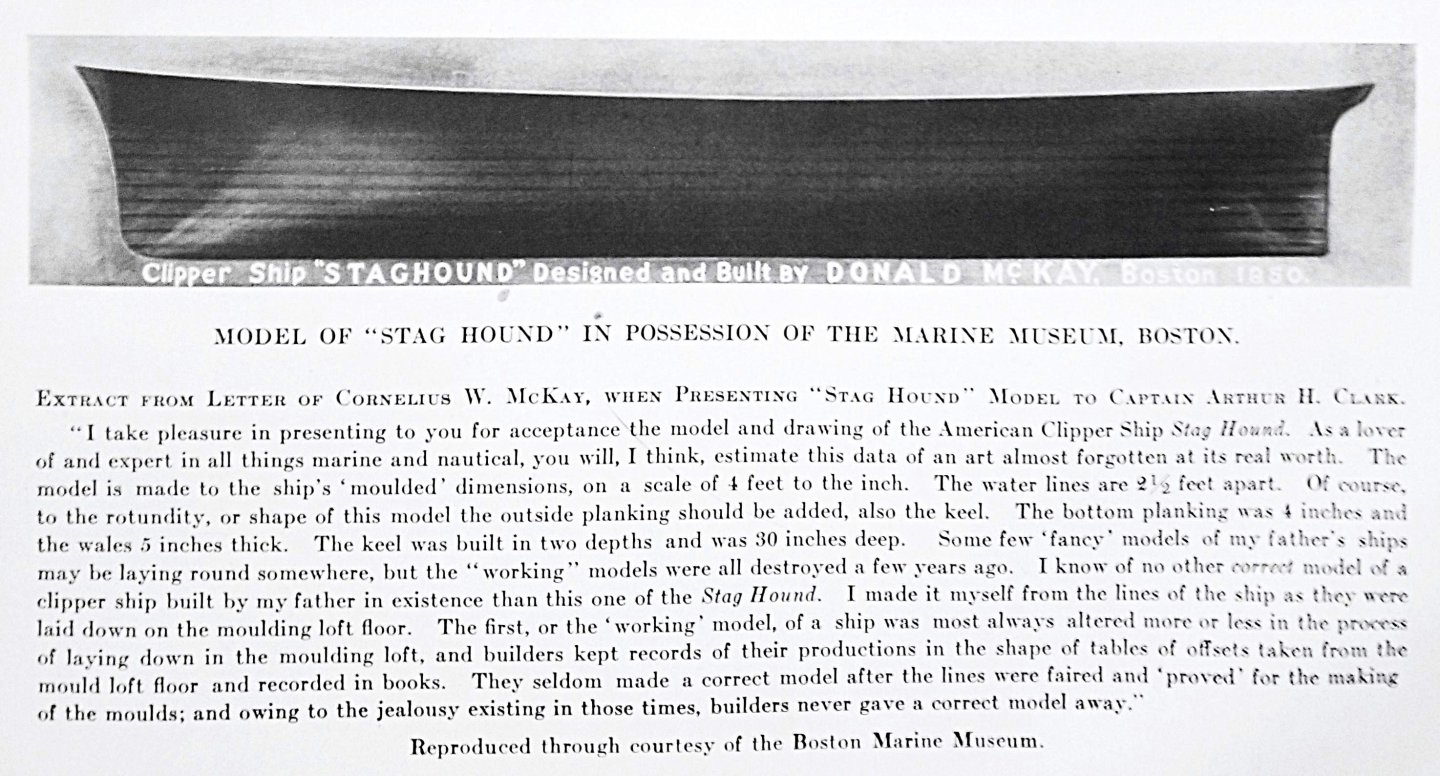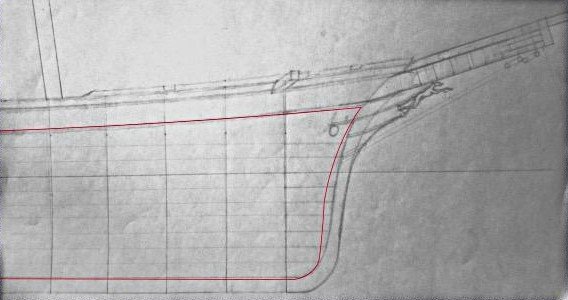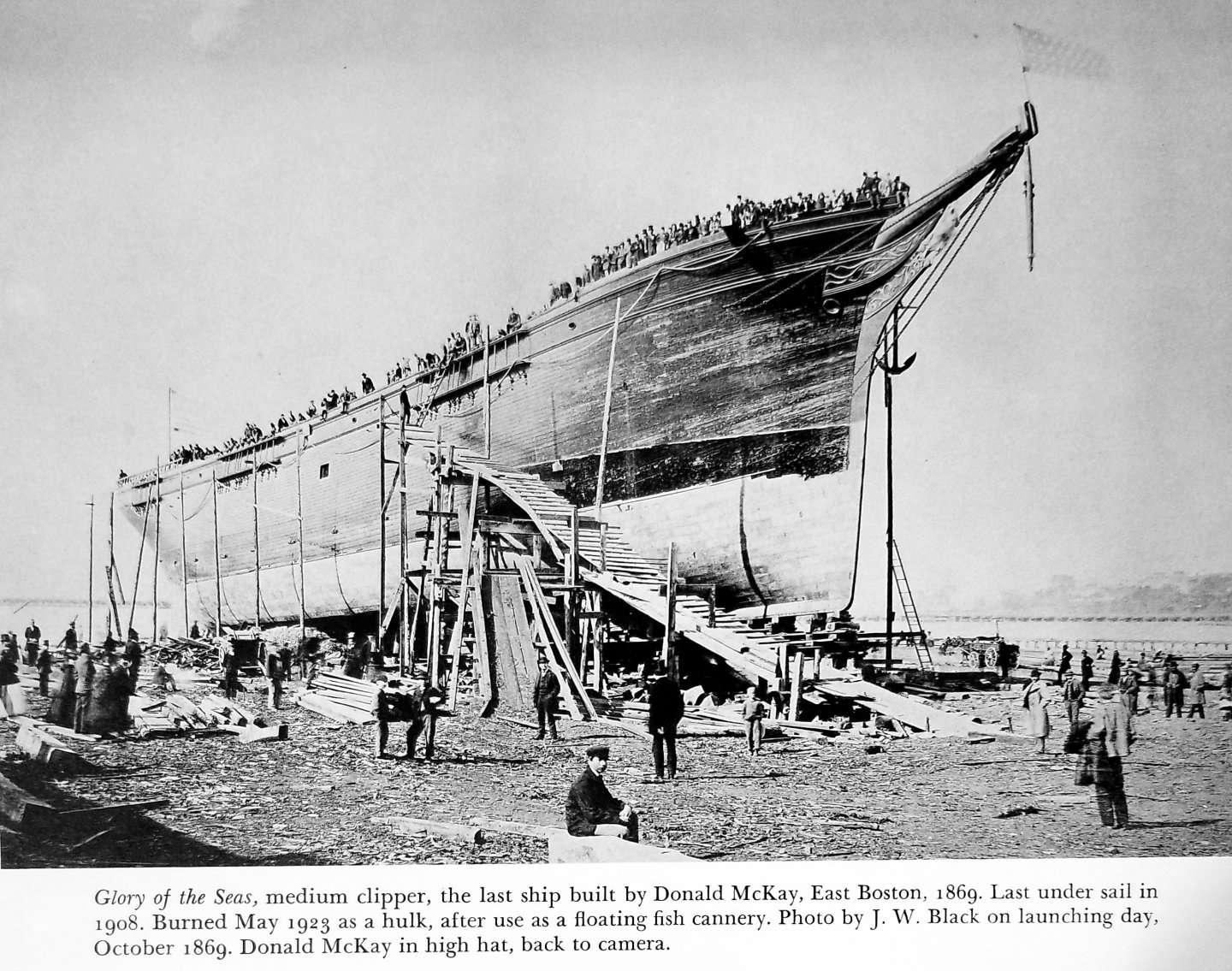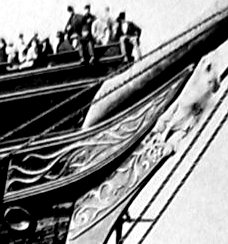-
Posts
2,167 -
Joined
-
Last visited
Content Type
Profiles
Forums
Gallery
Events
Everything posted by ClipperFan
-
@rwiederrich Rob, Thanks for that compliment. When I saw Seaman's Bride in Crothers illustrations it reminded me of a picture I'd seen before, although it wasn't a daguerrotype. However, I can see a significant weakness in the headboard, trailboard bow as opposed to the innovative McKay version. The very openess of the former arrangement leaves itself vulnerable to structural damage by a rogue wave. Duncan McLean made quite a bold statement in his introduction to Stag Hound. A person could be forgiven for attributing his glowing praise as pure hyperbole. But what if it wasn't an exaggeration but an honest scientific evaluation instead? It's beginning to make more sense now, when taking into account this unusual bow extension: "This magnificent ship has been the wonder of all who have seen her. Not only is she the largest of her class afloat, but her model may be said to be the original of a new idea in naval architecture." Meanwhile, I did a quick scale sketch of the Stag Hound stern poop deck. With a 7' distance from her mizzenmast center, I'm exploring a possibility of an 8' square portico, recessed 4' with dual sliding door side entrances. Since the poop deck measures 30' across at the fore and it's 5' high, it makes sense from a safety viewpoint to have a rail on turned stanchions in front. With an elevation of 8' the portico would just clear the front railings. Counting 1' overhangs, there's a 10' square area, which would make for a nice overlook. I envision open rails on that area too, but it's just a thought. Here's a preliminary rough sketch on the back of an envelope (wide "V" line is the envelope). It's done at 1:96 scale, to give you an idea of how this arrangement would look. (dotted lines are the 32' long × 13' wide lower apartment outline) Another approach would be to flush mount the portico with a front facing door. Since doors are 3' wide, to have a sliding door would mean a 9' square footprint, unless it's an ordinary door opening, than it could be a small 4-6' square. After all, it's a simple entrance to steps 3' downstairs to the lower apartments. Which one makes the most sense to you?
-
@rwiederrich Rob, Here's a contemporary image of a clipper ship with both headboards and trail boards, exactly as the Crothers illustration describes. From below it's clear that the headboard is more of a decoration than an integral extension of the ship. There are old fashioned open frames between the headboard and stem. The cutwater has a trail board, which is a beautiful embellishment but not as substantial as the unique McKay bow. That's why I'm so convinced he wanted to keep manufacture of it secret. Again, you want to avoid the trap of misunderstanding McLean's emphasis on lack of decorations. As we discussed before, Scottsmen like McKay and his friend McLean put more focus on seaworthiness than superfluous decorations. However brief though, McLean actually does mention that Stag Hound was equipped with both naval hoods and cutwaters. It's just two sentences and if you blink and you'll miss it: "An idea of its sharpness may be formed from the fact that, at the load displacement line (as the cutwater is tapered to an angle), a flat surface applied to the bow, from its extreme, would show no angle at the hood ends. Her bow commences at the cutwater, and swells from that point in unbroken curvature." Not until his description of Flying Cloud McKay's second extreme clipper, does McLean introduce the more clarifying term navel [sic: naval] hoods. But to me, his description of the Stag Hound clipper is identical to Flying Cloud with the exception of the word "naval." When I did my reconstruction, I kept all components to scale and in proportion identical to what we saw on Glory of the Seas. The only revision that I see necessary is to realign the cutwater taper to the Cornelius McKay bow profile. 1851 Daguerrotype of Clipper ship Seaman's Bride courtesy of H. Furlong Baldwin Library, Maryland Center for History
-
@rwiederrich Rob My tracing of the 1881 Henry Hall online illustration used 1 verticle line = 8'. When I printed it out, serendipity, each line is precisely 1" apart, printed out at 1:96th scale! Using a ruler, the copper line is exactly at the 16' line (2"). Horizontal line 7 on the Hall lines. Line 8 is possibly when the ship is fully laden. Vladimir's computer overlay of my drawing and what I figure is the Cornelius McKay half-hull model shows that I was very close. It will be no problem to revise the sketch to match the Cornelius McKay profile. In fact, it appears like it's just the bow profile that needs to be corrected. The image is reversed since I originally traced the print from the back. I've posted Vladimir's overlay from both port and starboard views. Seeing how accurate this is, it looks like I'm already a third of the way to getting an accurate hull.
-
@rwiederrich Rob While I haven't heard back from Vlad yet, I'm sure he won't mind if I share his work here. Vladimir's source for these vessel's line all come from Crothers' "The American Built Clipper Ship 1850-1856." This is developing amazingly quick. At this point, Vlad appears to be relying heavily on the impressive lines of Crothers. It's hard to tell from these plans which appear remarkably close to the Cornelius model. Since McKay's son built his Hull replica directly from moulding loft lines, as they were being laid out for the actual construction of the vessel herself, I want to adhere as precisely as possible to that source. I only hope Vlad concurs.
-
Rob, I think we're both saying the same thing in different ways. The key point I'm making is that the most reliably accurate framing source, which is primarily what the McKay model represents is his resourceful build. He admits himself that the 30" keel has to be added. To me that by implication includes the stem which is an extension of the keel. As far as practice is concerned, I have never seen a half-hull model include the monkey rail. It's no big challenge to add those missing components. I've got to imagine when the bulkheads are drafted, you'll want that height included. Like we both say, Vlad can do amazingly quick work. He seems to really like the Crothers body plan which has all components included. I just want to be sure Crothers is reconciled with Cornelius's model. I just feel like Cornelius showed incredible forethought to construct an exact builder's model of McKay's inaugural Clipper just while she was being built! Come on! Seriously, how much more authentic do you want to get? By the way, what do you think of the small, square portico now being 7' away from the mizzenmast center?
-
Bill, Depending on how clever you want to be, the Revell Stag Hound can be built into a pretty little model. Since you mention that silly little forecastle house, I'm pretty sure you've ditched it by now. Rob and Vlad learned the hard way that the forecastle deck mounts atop the monkey rail not the main top rail. The only rail surrounding the deck is the splash rail. It's actually possible to created the cutwater and naval hoods by using flash around the sails. There's plenty of that light, white plastic to spare. It all depends on how invoved you want to get.
-
@rwiederrich Rob, I thought of something else too. McLean states that the rear sternpost has a 2' rake. Adding that in with a 7' overhang beyond the sternpost would push the front of the poop deck back an additional 2'. Instead of being 37' forward of the sternpost, that makes it 35'. Since the mizzenmast center is 42' from the sternpost, it would now be 7' ahead of the poop deck. Now there's enough space for a small square portico entrance to the stern apartments 3' below. Does this make sense to you?
-
@rwiederrich Rob, Agreed, Vlad is a wonder on the computer. You can let me know if you agree or not. My strong feeling is that the port broadside photo of the Cornelius McKay model is the single best hull realization of any source we've located. I'm going to see if my local printer can blow it up to 2' 4", equivalent to 1:96 scale dividing 225 ft overall by 8, considering 1:96 equals 1" is 8'. To that I would add 18" (3/16th" at 1:96th scale) on top for the monkey rail, counting on the main top rail being 5' from the deck. McLean describes bulkheads as being 6 & 1/2' high. Meanwhile, the keel is described as being 30" (2 & 1/16ths") deep. The stem would extend the same, then add cutwater and naval hoods with the running canine figurehead. I saw that the Crothers plans include the monkey rail and keel. Vladimir's grid based profile looks very close to the Cornelius model but I can't tell if it matches exactly or not. It's also unclear if Vladimir's grid profile includes monkey rail and keel or if those items still need to be added. So far he hasn't replied to my questions.
-
@hof00 Harry, My intent is just to assist modelers in their objectives to create a more accurate version of the ship they're working on. As far as doing actual modeling myself. I never progressed beyond plastic models. I am constantly impressed with wooden construction capabilities of craftsmen like yourself. When fashioning a McKay bow, the other component to remember is the cutwater below the naval hoods. This important component is what gives McKay's clipper ships like Flying Cloud their yacht like appearance. On the real vessel, her trumpet bearing, winged angel figurehead has her feet attached to the cutwater, while a large, hidden iron bar mounted her to naval hoods above. She was about 7 feet long and projected about 8 feet out with the cutwater. I hate to make your modeling efforts even harder but at 1:96th scale, she'll be 7/8ths of an inch projecting out another inch with the cutwater. Tiny, for sure. By having such a small figurehead in scale makes the rest of your ship larger in comparison. The anchor hawse hole is much lower than on your plans as it exits below the naval hoods. Since the height of the exterior molding between lower planksheer and upper mainrail is 4 feet, a foot above the inner deck due to her foot high inner waterways, the rear of the naval hood curving triangular shape is 3 & 1/2 feet, depth of the cutwarer below would be 2 feet.
- 186 replies
-
- Flying Cloud
- Mamoli
-
(and 1 more)
Tagged with:
-
@druxey Thanks for the Latin course. I had to use a translation app just to find out it simply means "with a grain of salt" or "don't take literally." Actually, Chappelle's plans are quite close in profile to the Cornelius model. Spacing for masts and deck fittings appear to be slightly off but that could also be due to some distortion from challenges in scanning a thick book. The thing that has always baffled me is this. Why have such an apparently cavalier treatment of McKay's clipper ships always been given by a commercial modeling industry? Whenever I saw a McKay clipper it always bugged me how plain the bow was. In addition, it made me uncomfortable to see how awkward figureheads looked, just tacked on below a bowsprit. It makes me wonder, Lars Bruzelius did his copywrite for his website in 1999. Before that, were Boston Daily Atlas articles that hard to locate? Now we've learned that my suspicions were right all along. Every McKay model has been wrong. A plain stem was not how he designed his revolutionary clippers. In fact, after looking at dozens of other big American clippers, we've learned that one of Donald McKay's closely guarded secrets, which nobody else copied, was his complex prow structure. Cutwaters extended the stem. They were in turn then thoroughly bolted through on both sides by durable naval hoods, really an extension of the graceful hull. As a comparison, Rob shared an image of the prow of the bark Amy Turner. Typical clippers had a simple cutwater to which a figurehead was mounted. This in no way resembles the unique McKay bow. As we develop Stag Hound it will become clear how much of an advantage this rugged prow was. That will just be one of the exciting features as we finally realize McKay's first beauty.
-
@Jared Nicely done. She looks real clean, neat and tidy.
- 431 replies
-
- Flying Fish
- Model Shipways
-
(and 2 more)
Tagged with:
-
@rwiederrich Of course, we all noticed that compared to the Chappelle plans, the Cornelius model looks a little slim. Reading the son's letter he revealed that the 30" keel has to be added below. I know for a fact too, that the uppermost monkey rail is not included on half-hull models. That adds 16-18" on top. Which would then make her appearance more full. Here's where @Vladimir_Wairoa added in his computer imagery talents. He created profiles of the Chapelle lines and compared them to both Hall and Cornelius. It's clear that the Chappelle hull is a little short vs the Cornelius model. That's most likely due to Chappelle plans being scanned from a book where part in the center bends in. As we proceed, that will be fixed.
-
@rwiederrich Afterwords, I found the large, precisely carved "half-hull" model, crafted by McKay's own son Cornelius, taken from moulding lines directly off the lofting floor as Stag Hound was being built! There's no more authoritative source than a direct descendant of Donald testifying as to the historical authenticity of his own creation honoring his father. Even more fascinating is that the image with excerpt of a letter originated in a 1928 publication by another relative, Richard McKay in his encyclopedic book "Some Famous Sailing Ships and Their Builder Donald McKay." Two profiles are very similar with an exception being the authentic model has a more vertical underwater prow. Next step is to redraw ship and bow accurately using the McKay model.
-
@rwiederrich While researching bow structure for Glory of the Seas I stumbled on the exact same description of the elusive naval hoods and cutwater overlapping the stem for the bow of Stag Hound! Using plans online from the "Report on the Ship-Building Industry in the United States 1884" by Henry Hall, I sketched this 1:96th scale reconstruction of her surprisingly beautiful yacht like prow. The image is reversed since I traced the lines.
-
@rwiederrich Rob, I wouldn't worry about the technicality. If someone knows, I'm sure they'll share the "how to." Meanwhile, here's more of the images we shared privately before to get your build log up to date. First 5 are lightened up lines from Howard I Chappelle's 1967 publication "The Search For Speed Under Sail", including Vladimir's computer matched plans. Last is a first edition book cover, for anyone unfamiliar with this comprehensive work. Chappelle's works are beautiful but still unfortunately inaccurate (slightly off topic but another bone I have to pick, besides her completely plain bow, is the ridiculously small rear coach house on Sovereign of the Seas. "She has a full topgallant forecastle, a large house amidships and a spacious trunk cabin, in two divisions, built into a half poop deck, with steerage room abaft." The Boston Daily Atlas, June 19, 1852. The line "steerage room abaft" says that this was a large cabin which occupied the entire poop similar to Flying Fish which preceeded this vessel, yet every model I've seen has that tiny small cabin instead! Back to the current topic.) So when constructing scratch built replicas, in order to get accurate results, I've learned it's quite essential to compare actual historical descriptions by Duncan McLean in The Boston Daily Atlas to other purported sources. Regardless, we still plan on referring to Chappelle's deck layout but getting it faithful to the December 20, 1850 details.
-
@rwiederrich Rob, To help others avoid pitfalls of incorrectly modeling Stag Hound based on erroneous plans, I'm sharing this evaluation we made of a beautifully crafted but wildly inaccurate model. Most likely due to a lack of accurate information and misinterpretation of another's description of a half-poop deck, EB Douglas drafted these Stag Hound clipper plans in 1922. Hull form looks very close to Howard Chappelle's lines and sailing rig is very similar to David Macgregor's. Too bad Mr Douglas apparently had no access to Duncan McLean's far more accurate description, which included the fact that the Stag Hound poop deck was 44' long, "half" the size of others. That, and typical of all McKay models, the bow is plain. Nothing at all like the real ship which had complex naval hoods and cutwaters overlapping her stem, which augmented her sharp prow.
-
@rwiederrich since I see you've already laid out the Chappelle lines from his book "The Search for Speed Under Sail" I will endeavour to keep up with your remarkably swift construction pace. Meanwhile I'm going to share another inspiring work of this magnificent McKay first. This one's titled "Stag Hound in the Tea Trades" by Cape Cod artist Frank Vining Smith. He really captures her lean lithe hull and very lofty rig in a beautiful ocean setting.
-
Rob, At first, I couldn't locate your Stag Hound build log because I looked for it in the section for vessels built between 1801-1850. With your permission, I'm going to share some of the most beautiful artwork that inspires me to love Donald McKay's premiere inaugural extreme clipper. Back in the late 50's for Christmas presents, our parents gave us two Revell clipper ship models. I was given the Flying Cloud while my elder brother received the Stag Hound. I remember really loving my model which had a spectacular image of the clipper ship flying dramatically in stormy rough weather. Meanwhile, my brother's had a peaceful painting of his ship by artist John Steel. That was my first exposure to Stag Hound. Time-Life Books Seafarer Series "The Clipper Ships" had an inspiring piece by JE Buttersworth. Since it's a two page spread the fold can't be eliminated. Later I found another image of the same piece courtesy of The South Street Seaport. The majesty and impressive length, not to mention lofty spars of McKay's premiere extreme clipper are all on beautiful display. At the time of her launch, Stag Hound was the undisputed largest merchant vessel in the world. However. to my knowledge, there's not one accurate version of this marvelous ship that's ever been created. That's primarily due to Donald McKay himself being so successful at guarding his nautical secrets that his unique bow construction has been lost since 1850! Rob, Vladimir, I and a few others like Druxey with unparalleled help of author Michael Mjelde engaged in a remarkable journey to reconstruct McKay's final, longest lived medium clipper Glory of the Seas. Through the ever generous documents and even more rare contemporary images, dating all the way back to her launch and fitting out in 1869, Michael Mjelde has been a priceless contributor in our goal to finally realize the stalwart beauty of this spectacular ship. As we gradually unveiled McKay's secrets, repeatedly the thought occured to me that Glory of the Seas was becoming a maritime "Rosetta Stone" to discovering the true appearance of Donald McKay's other beautiful clipper ships. So, armed with the experience and knowledge we've garnered, we're applying our research abilities to finally realize the historically accurate appearance of Stag Hound the innovative vessel which started it all for McKay and which put Boston on an equal footing with rival New York. While there exists no known photos of this early clipper, there are some useful resources. Chief among them is a large 1:48th scale, 4 foot, 8 inches half-hull Stag Hound model carved by McKay's own son Cornelius. There's a single, useful broadside picture of the model featured in the 1928 publication "Famous Sailing Ships and Their Builder Donald McKay." This encyclopedic book with many beautiful full color illustrations was written by another relative, Richard McKay. To researchers, besides the spectacular model itself, the first hand account by the son emphasizes how meticulously accurate his model was, since he literally constructed it precisely from lines of the full-sized ship taken right off the moulding loft floor as she was being built. Cornelius further emphasized that all of his father's "builder's models" had been previously destroyed. Another valuable resource comes from Lars Bruzelius's wonderful website which contains dozens of highly accurate, very specific construction details of sailing vessels. Among them, I discovered an article by publicist Duncan McLean, The Boston Daily Atlas written on December 21, 1850. Here's a link to the entire article: http://www.bruzelius.info/Nautica/News/BDA/BDA(1850-12-21).html Based on that description, I sketched this bow of Stag Hound, for the first time illustrating her authentic, historically accurate appearance including those pesky, misunderstood naval hoods and cutwater overlapping her stem, which everybody before have missed! Since my original drawing was based on the 1881 Hall lines, they differ slightly from the more accurate Cornelius McKay model. Vladimir's using his computer skills to reconcile the two lines. His red line of the half-hull model overlap the gray lines of my original pencil sketch. This promises to be another fascinating collaboration.
-
@hof00 Harry, I tried twice to answer your questions on my cell phone only to lose my texts both times. Now I'll explain why I added 3 Glory of the Seas pics to your questions about Flying Cloud bulkhead stanchions. First, those stanchions are also the ship's frames. There're no specific dimensions given for Flying Cloud but as I shared for Glory those frame stanchions were 28 inches apart center to center and were sided 11 inches and molded 8 inches. I'm not as fluent in metric as I am in standard measurement. So, you'll need to use a conversion tool for that. 1:96th scale is 1-inch equals 8 feet. 1/8th inch equals 1 ft (width would be just under that) 1/16th inch is 6 inches (depth would be slightly more). Modeling at the scale you're working on, I would err on the side of making details smaller than oversized as it will make your vessel look larger. Now to explain the pictures. From your bow image, it concerns me that your bowsprit opening appears to be too low. In addition, it's oval when in reality these spars were actually rectangular. The top image is the famous Black photo of Glory of the Seas on the launch ways at the Peabody-Essex Museum, Salem, Mass. First, notice how high up the bowsprit mounts in the ship. It's just above the sheer line molding and below the main rail top. The close-up detail shows how the mounted entrance is not round but instead rectangular. The 1913 Muir photo starboard image of Glory of the Seas at the Spokane Grain Dock is a great resource to show the unique McKay prow in meticulous detail. It's a little hard to make it out, since jib sails cover part of this, but the inner jibboom narrows about 5 to 6 feet before it enters the rectangular opening at the monkey rail. Below that is the large bowsprit which also widens a little and becomes rectangular as it enters the opening just above the sheer line. This mechanical design makes sense as it makes it impossible for either massive spar to rotate, which could lead to disastrous consequences. Immediately below and reinforcing the bowsprit-jibboom combination are the substantial bow extensions referred to as naval hoods. lovely Grecian goddess Athene mounts directly to these combined nautical devices via a massive iron bar, which I personally saw on my recent visit to see her in person. They still wear the lovely intertwining ribbon carvings which were originally gilded in gold leaf. Behind and below her feet are the cutwaters which overlap the stem and are in turn sandwiched between the naval hoods. Only a small section of the original ornate acanthus leaf carvings remains. Another detail that commercial models get wrong is placement of the anchor chain hawse hole. That's due to the fact that they've completely missed inclusion of the devices I just enumerated, and which can be clearly seen here. What simply blows my mind is that this unusual prow arrangement has been on every McKay clipper, save one, the Great Republic since Donald McKay debuted his inaugural extreme clipper Stag Hound December 1850! Correct placement of this hawse hole is immediately below the base of the naval hoods, as can be clearly seen in this remarkable image. I sincerely hope these factual insights will enable you to create your most accurate Flying Cloud model that you desire.
- 186 replies
-
- Flying Cloud
- Mamoli
-
(and 1 more)
Tagged with:
-
- 186 replies
-
- Flying Cloud
- Mamoli
-
(and 1 more)
Tagged with:
About us
Modelshipworld - Advancing Ship Modeling through Research
SSL Secured
Your security is important for us so this Website is SSL-Secured
NRG Mailing Address
Nautical Research Guild
237 South Lincoln Street
Westmont IL, 60559-1917
Model Ship World ® and the MSW logo are Registered Trademarks, and belong to the Nautical Research Guild (United States Patent and Trademark Office: No. 6,929,264 & No. 6,929,274, registered Dec. 20, 2022)
Helpful Links
About the NRG
If you enjoy building ship models that are historically accurate as well as beautiful, then The Nautical Research Guild (NRG) is just right for you.
The Guild is a non-profit educational organization whose mission is to “Advance Ship Modeling Through Research”. We provide support to our members in their efforts to raise the quality of their model ships.
The Nautical Research Guild has published our world-renowned quarterly magazine, The Nautical Research Journal, since 1955. The pages of the Journal are full of articles by accomplished ship modelers who show you how they create those exquisite details on their models, and by maritime historians who show you the correct details to build. The Journal is available in both print and digital editions. Go to the NRG web site (www.thenrg.org) to download a complimentary digital copy of the Journal. The NRG also publishes plan sets, books and compilations of back issues of the Journal and the former Ships in Scale and Model Ship Builder magazines.

